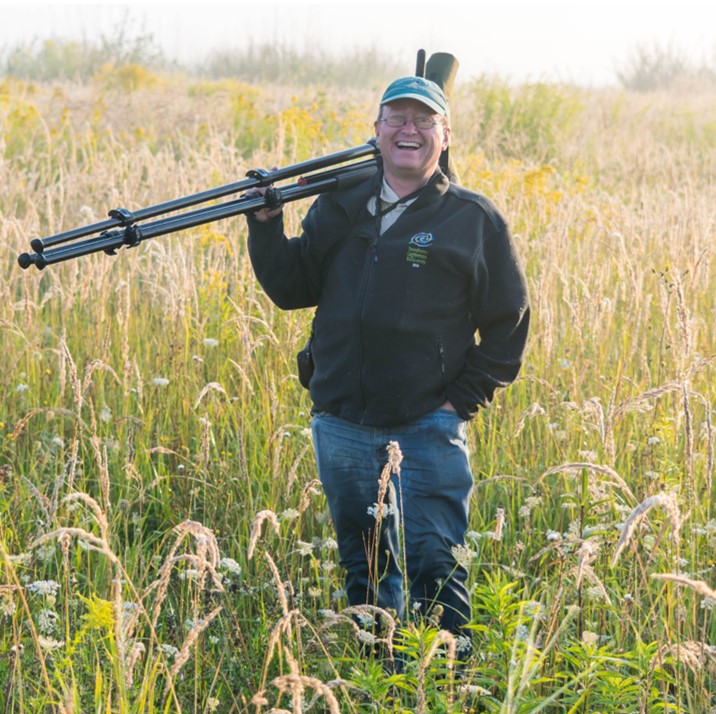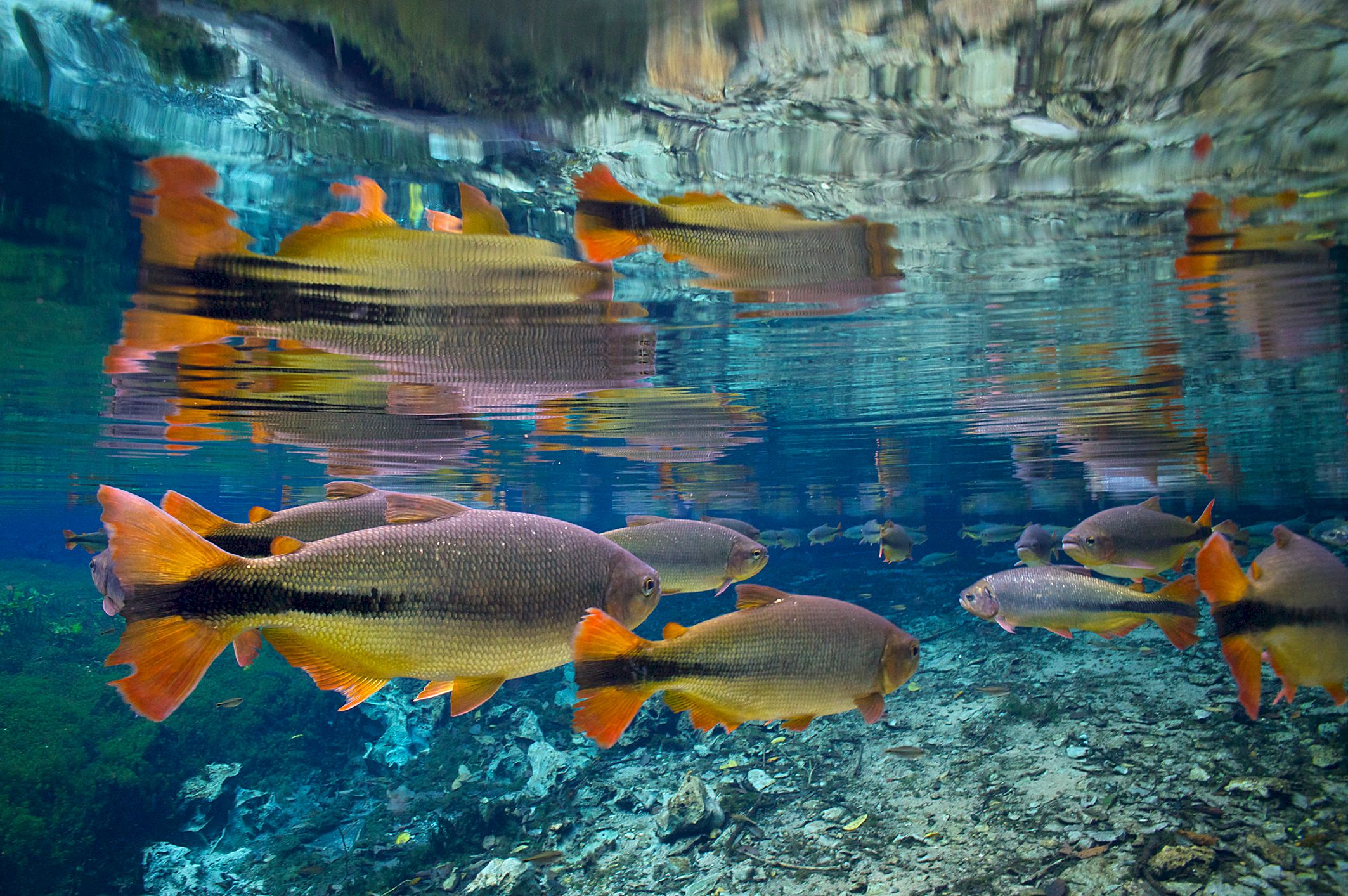“We are racing uphill to try to reverse the loss of biodiversity”: Dr. Thomas Brooks, Chief Scientist at IUCN, on science and conservation.
Dr. Thomas Brooks is Chief Scientist at the International Union for Conservation of Nature (IUCN). During his visit to the IUCN Regional Office for Mexico, Central America and the Caribbean (ORMACC), we talked with Dr. Brooks about the relation between science and conservation, and the importance of science for an organization like IUCN.
Dr. Thomas Brooks, originally from Brighton, UK, holds a B.A. (Hons) in Geography from the University of Cambridge (1993) and a Ph.D. in Ecology and Evolutionary Biology from the University of Tennessee (1998). His background is in threatened species conservation, especially birds, and in biodiversity hotspots. He has extensive field experience in tropical forests of Asia, South America and Africa and has authored around 300 scientific and popular articles. At IUCN, his responsibilities include scientific support to the delivery of knowledge products under IUCN standards, maintaining IUCN interaction with peer scientific institutions, and strengthening the Union’s culture of science.
 Dr. Thomas Brooks, IUCN Chief Scientist
Photo: NatureServe
Dr. Thomas Brooks, IUCN Chief Scientist
Photo: NatureServe
Providing a structured way of testing ideas and of understanding the likelihood of particular outcomes and results, science is important for any applied discipline, be it engineering, education or medicine, says Dr. Brooks. “But it is maybe especially important for conservation” he adds, “as conservation science is a discipline with a timeline. We are fighting against the ticking clock, we are racing uphill to try to reverse the loss of biodiversity. And so, while we will inevitably make mistakes along that road, it is really important that we learn from them, working out better and better what works and what does not work, so that we can put more of our energy and more of our resources and, crucially, more of our time, into things that do work towards conserving biodiversity. Science provides the basis for doing that”.
Since its foundation more than 70 years ago, and throughout its history, IUCN has recognized very strongly the importance of a robust scientific basis to conservation. The fundamental role of science within the Union is reflected into its foundational documents, the IUCN Statutes, which define objectives related to supporting scientific research, undertaking data assessment against a set of scientific standards, supporting measurement of conservation, and guaranteeing independence and scientific integrity in IUCN´s work.
In order to achieve these objectives, IUCN has established the expert Commissions, which are a key feature of the Union and the primary mechanism through which science is advanced in the service of conservation. As Dr. Brooks explains, the fact that the Commissions are independent and time-bound bodies makes them particularly well suited to their role. “The Commissions are established in any given World Conservation Congress to deliver stated mandates and address specific sets of questions over the coming four years. In practice, many of the Commissions are quite enduring and last for many years or many decades, as conservation challenges are very long-term ones”, explains Dr. Brooks. “But they are not assumed, they are very deliberately responsive to the needs expressed by the Membership. This provides a basis to ensure that the work coming from those Commissions is not driven by particular financial or political interests”, he adds.
When asked about a concrete example of the Commission’s contributions to conservation, Dr. Brooks does not hesitate to mention the IUCN Red List of Threatened Species, the flagship product for which the Union is probably best known. The Red List, established within the Species Survival Commission (SSC), provides a structured way of assessing the risk of extinction of species. While the Red List is very relevant for all sorts of activities in conservation and sustainable development in general, it is not prescriptive. It says, “this is the information about the species, where it lives, what is threatening it, what kind of conservation actions would help to alleviate those threats”, but it does not say “that means that this Government has to establish a protected area here or this business needs to reform its practice over there”, explains Dr. Brooks. This is a very important feature of the policy development process within IUCN, in which the Commissions play the role of independent expert advisers, providing the scientific underpinning to any debate aimed at developing IUCN´s motions, which become Resolutions when adopted by IUCN’s Members.
Scientific information being policy relevant but not policy prescriptive is particularly important when we think about how Indigenous Peoples´ and local communities’ knowledge can be incorporated into conservation related decision-making. Dr. Brooks acknowledges that drawing from the knowledge and the expertise of the people who are the closest to nature is crucial. The fact that many Indigenous Peoples (IPs) and local communities live in the places which are most important for biodiversity, makes the case for applying indigenous and local knowledge in conservation even stronger.
However, this is not an easy process. “There are practical challenges such as language, challenges of time, challenges of trust, and there are challenges around clarity on what will happen with the information”, notes Dr. Brooks. “There have been a lot of well-meaning but misguided cases where, for example, a species may be highly threatened, and so regulations on hunting, or harvesting or trade have been introduced, but without recognition of the fact that the reason why those species are threatened is not because of the harvest, but rather because of some other threat, let’s say unsustainable agriculture, climate change or invasive species. And so, for applying indigenous and local knowledge to the assessment of a species that is important for local subsistence, it is really important that there is not an automatic connection between that assessment and a specific regulation. That regulation has to be put into context together with other information”.
The application of scientific information into conservation actions also faces other challenges, one of them being the time pressure that conservation faces and the fact that science can be perceived as being a lengthy process, one that requires time to generate, process, peer review and publish data.
In the context of the multiple crisis our planet is facing, “we may get tempted to take shortcuts”, says Dr. Brooks. “But we must recognize that we do not have time to make the same mistakes all over again and reinvent the wheel. Rather, if we do invest in supporting robust underlying science to make sure that planning processes are solid and that conservation actions are implemented in an adaptive way, and if we support ongoing monitoring and documentation of what is actually happening as a result of those actions, then we could really derive a virtuous circle that will benefit conservation and improve the survival chances for life on earth”.
During his visit to ORMACC, Dr. Brooks and other members of IUCN Science Team engaged in challenging and enriching discussions with ORMACC technical teams about how to merge scientific research and action on the ground, opening new paths for strengthening interaction across the different scales of IUCN’s work. Dr Brooks also addressed teachers and students of the University of Costa Rica through an inspiring keynote talk titled “Does Conservation Work?”, organised in collaboration with the School of Biology and the School of Geography.



